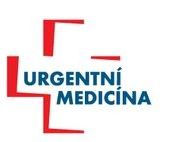INTRODUCTION
- Contents
- Editorial – Jana Šeblová
EMERGENCY DEPARTMENTS
- Unusual cause of anaemia of a female patient with mental bulimia – Martina Fibichová
SYSTEMS´ ORGANIZATION AND MANAGEMENT
- Safe environment for paramedics – Jaroslav Pekara, Ondřej Brůžek
- Safety at Emergency Department – Jana Šeblová
INFORMATION
- Report from the XIV Middle-European Congress of Emergency and Disaster Medicine – Táňa Bulíková
- Dr. Med. Jiří Štětina recieved the 2024 award of the President of the Association of EMS of the Czech Republic
- The last flight of Josef Knotek – Jiří Knor
ABSTRACTS
UNUSUAL CAUSE OF ANAEMIA OF A FEMALE PATIENT WITH MENTAL BULIMIA
Martina Fibichová
Abstract
Case report of a young woman who was repeatedly examined and hospitalized for manifestations of anaemic syndrome in severe normocytic normochromic sideropenic anaemia. The patient was evaluated in a low-threshold internal medicine admission and hospitalized in the district internal medicine and specialized hematology departments. She underwent a large number of noninvasive and invasive investigations, but only a thoroughly taken and verified case history led to the correct diagnosis. The case report highlights the pitfalls of differential diagnosis of anaemia and eating disorders. Pathological results of specialized examinations without a comprehensive approach to the patient can be misleading. Elucidation of the causal cause of the difficulties is a prerequisite for targeted treatment. Establishing the correct diagnosis in this patient led to adequate, in this case psychiatric treatment with a very uncertain prognosis.
Key words: sideropenic anaemia – venepuncture – eating disorder – mental bulimia – mental anorexia – hypoglycemia factitia – Münchausen syndrome
SAFE ENVIRONMENT FOR PARAMEDICS
Jaroslav Pekara, Ondřej Brůžek
Abstract
The article deals with mapping the risks that can be faced by emergency medical services. It focuses on the risks associated with disorganized terrain and traces the possible hazards from the moment a call is received at the medical dispatch until the patient is handed over at the hospital. The aim of the communication is to provide as comprehensive overview as possible of all the risks that ambulance workers may face. The article discusses basic information on the most common infections encountered by paramedics and basic personal protective equipment. The article also includes a survey showing that EMS personnel do not always use the necessary and available protective equipment. The practical part of this paper has two objectives: to find out how the paramedics are aware of the risk factors affecting their work, and to find out whether the paramedics always use the necessary and available protective equipment.
Key words: safety – biological risks – disorganized terrain – paramedic
SAFETY AT EMERGENCY DEPARTMENT
Jana Šeblová
Abstract
Emergency department is by nature of the provided care a risky environment. Medical errors associated with providing care are in most cases preventable. Overcrowding, frequent disruption of care, multitasking, busy environment, complexity of cases, time pressure and continuous decision-making together with high responsibility are some of the reasons which decrease the safety at emergency departments. Safety of the provided care is one of key elements of quality. It is necessary to analyze the data on adverse events and safety incidents and take preventive measures based on this analysis. It is also importatnt to pay attention to working conditions of the personel and eliminate errors coming from fatigue, exhaustion, loss of concentration or burnout.
Key words: patient safety – emergency departments – adverse events – safety incidents – overcrowding
